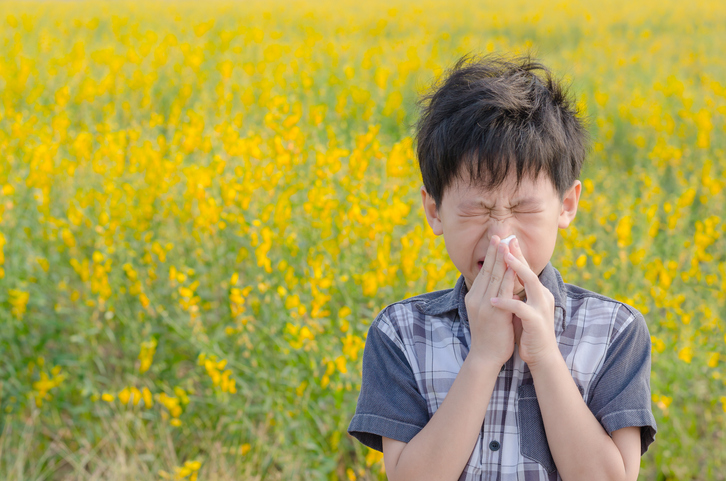DHHS → MeCDC → Environmental and Community Health → EOHP → Pollen
Pollen and Health

Pollen refers to the tiny grains or seeds released by flowering plants, trees, weeds, and grasses while they are blooming. Levels of pollen in the air are highest in spring and fall.
Exposure to pollen can cause allergic reactions like hay fever (allergic rhinitis), which results in sneezing, runny nose, and congestion; or allergic conjunctivitis, which causes red, watery, itchy eyes. Pollen can also worsen the symptoms of asthma and other respiratory illnesses.
Pollen and Climate
Changes in climate, such as warmer temperatures, increasing precipitation, and increasing levels of carbon dioxide (CO2) in the air, can all affect the length and intensity of pollen season:
- Pollen seasons may begin earlier and last longer than in past decades.
- Increased CO2 levels can cause plants to produce and release more pollen.
- Allergy symptoms may be more intense and longer lasting, and more people may begin to experience allergy symptoms.
Protecting Against Pollen's Effects
Those with pollen allergies can take these steps to reduce the severity of their allergic symptoms:
- Monitor local pollen forecasts and plan to spend more time indoors when levels are high.
- When outside, try not to touch your eyes or nose.
- After being outside, wash your hands, change your clothes, and take a shower if needed to remove pollen from your hair and skin.
- Keep windows closed when pollen levels are high.
- Take allergy and/or asthma medications as advised by your healthcare provider. Learn more about allergy testing (PDF).
- Use high-efficiency filters in your home's heating, ventilation, and air conditioning systems. Get tips on picking an air cleaner for your home.
Additional Resources
Maine Pollen Monitoring Network
Coming soon: local pollen data!
Maine Center for Disease Control and Prevention is partnering with the Maine Department of Environmental Protection to establish a statewide pollen monitoring network that will track pollen levels over time in different regions of the state. This data will help better predict high pollen days, allowing those with allergies to take action and prevent health impacts.
Check back here for real-time Maine data in spring of 2024.
Learn More About Air Monitoring:
Maine Department of Environmental Protection

